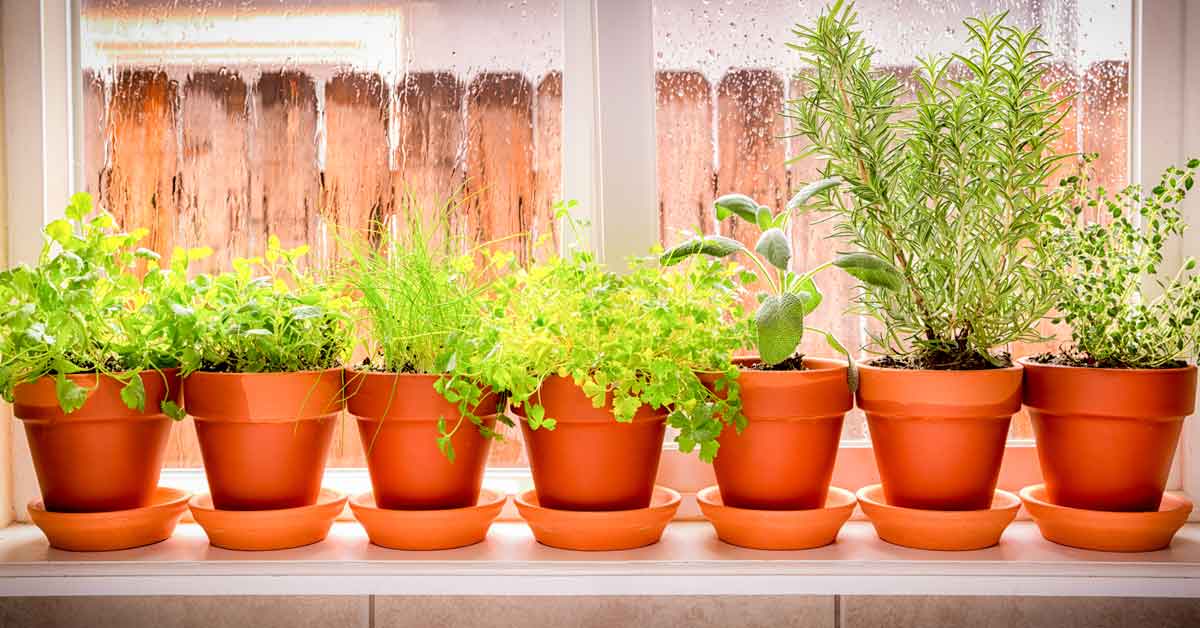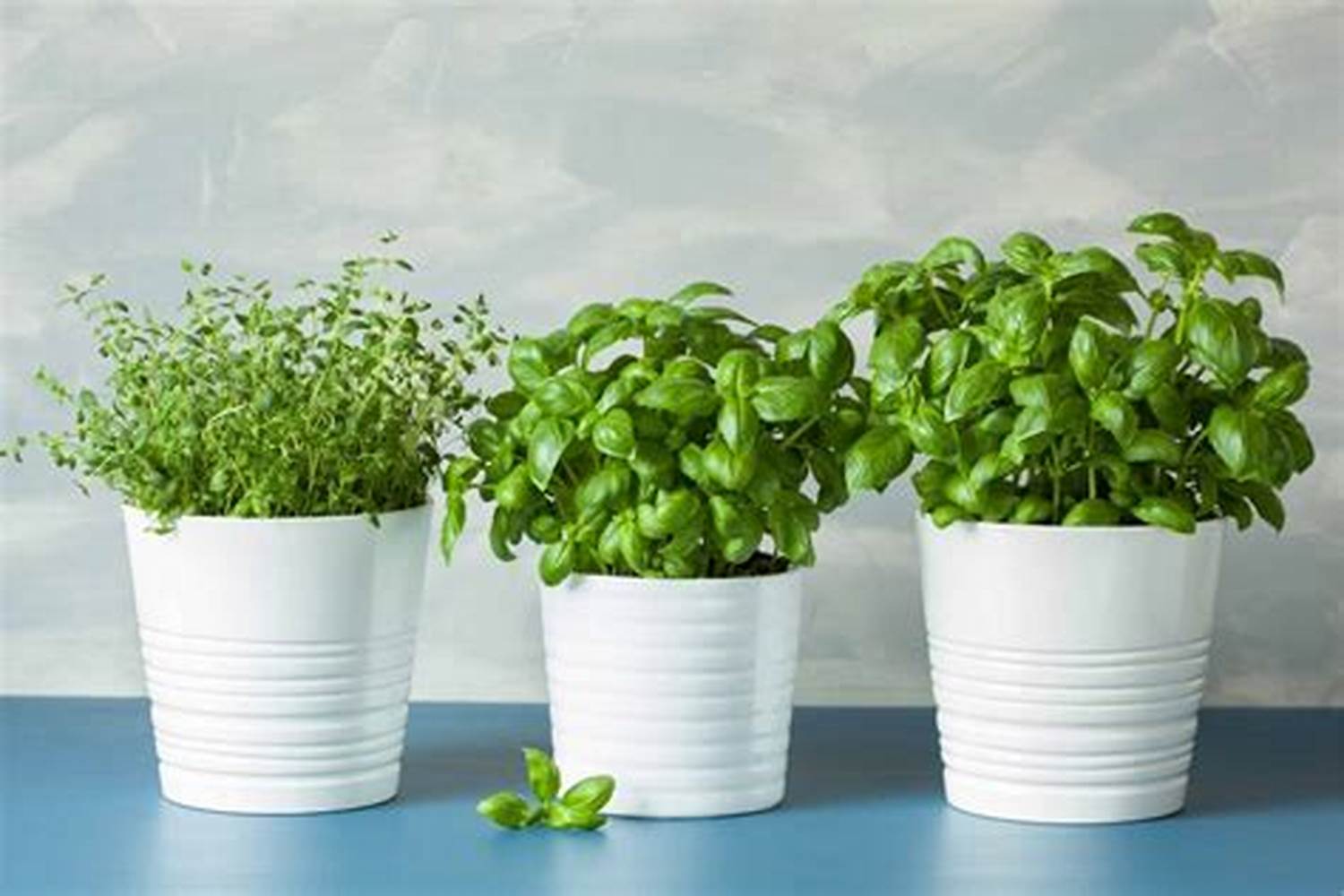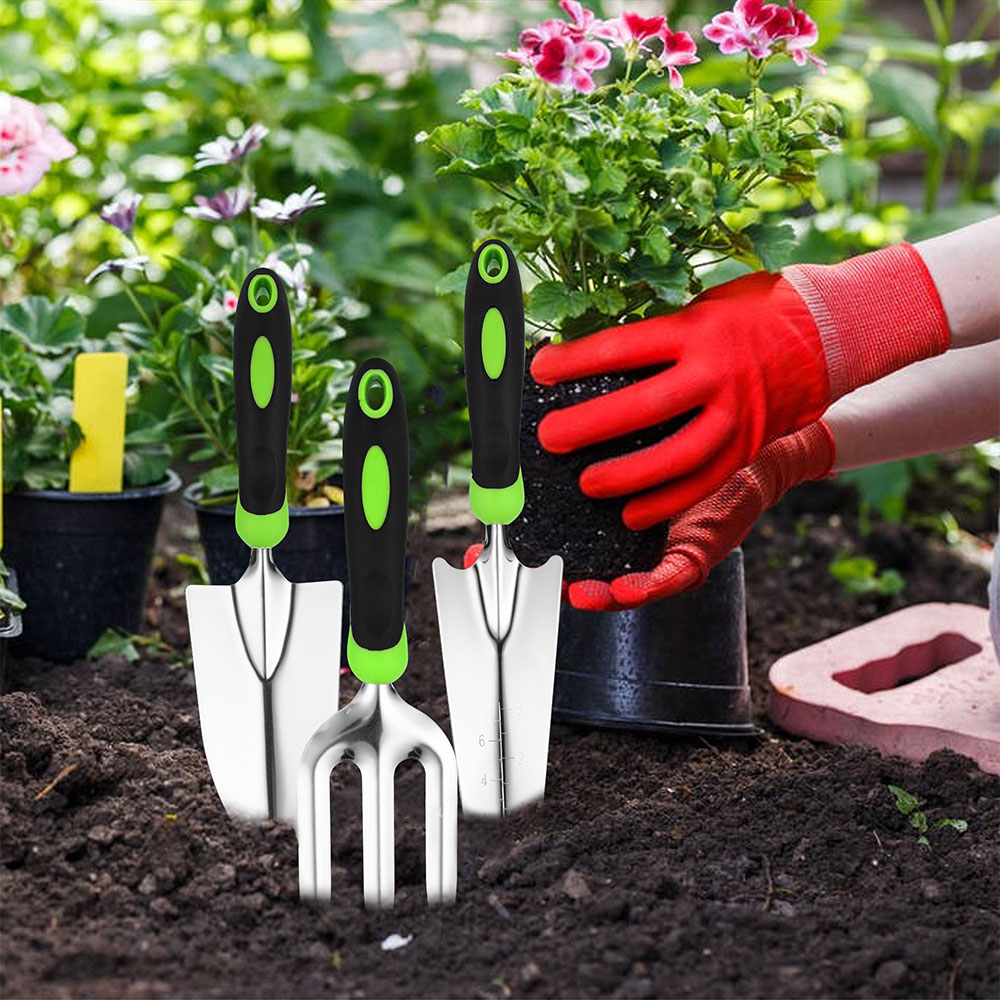My herbs are growing in one of the so-called soil-less composts. These are peat based and have the requisite plant foods incorporated. After about two months, I shall begin feeding the plants with a soluble plant food for by this time; most of the existing nutrients will have been used by the growing plants or leached from the soil.
A mixed pot of young plants. Make sure to give them plenty of water if they are in a sunny place.
If you want to grow herbs in any kind of container it is important that you begin with a good potting compost. Different types of these are on sale at all garden stores, centers and the internet. The soil-less types are light in weight, an important point for some people in certain conditions.
However, where these lightweight composts are used out of doors, for instance in window boxes or tubs where at first, while the plants are young, they do not cover the surface, I suggest that it is both wise and beneficial to cover the soil surface with a layer of clean horticultural sand or with washed shingle or some similar material.
This will prevent the precious compost from being blown away on windy days or in windy places. It will also keep the roots cool by preventing too rapid moisture loss. If you feed the plants from time to time (and when you do be sure to follow the directions very carefully and precisely) you can go on using the same compost for quite a long time for the same plants.
It is a good plan to rejuvenate it each spring by giving it a fresh top dressing. Remove the top inch of soil and replace with fresh. Tough, shrubby plants like rosemary originate in the hot, dry garigue areas of the Mediterranean and they can get by with little water, though it is surprising what a difference a plentiful supply makes to them. If you want a good supply of fresh, tender herbs you must be prepared to water lavishly those which are contained, especially if they are very sunny, exposed places.
It helps also to spray the foliage in the early morning before the sun hits it, and on summer evenings. Besides refreshing the plant and helping to keep it turgid, this practice also keeps the leaves clean. Remember that the softer and lusher the nature of the leaves, the more dependent is the herb on moisture. But be sure that you do not kill the plants by drowning, something much easier to do with plants growing indoors than those which are outside.
When potting soil composts are used, it is necessary to place a really good layer of some kind of drainage material at the base of the container. It should fill at least a quarter of the vessel. This ensures that any surplus water that sinks is held in this open layer so that it does not make the soil waterlogged.
The soil-less composts behave differently and it is not so important to provide a drainage level for them. All containers used outside should have drainage holes in them so that water can seep away. Indoors this is not so important and where there is no hole in the container, one should provide a drainage level as for containers out of doors. Often a good layer of charcoal nuggets is sufficient.



